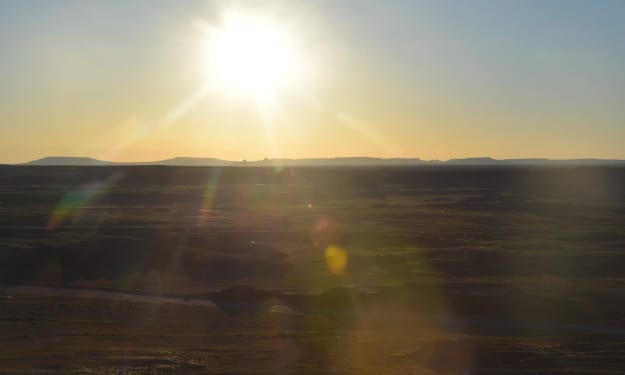The Rise and Fall of Empires
Lessons from History and Our Modern World

At its height, the Roman Empire was a beacon of human advancement, home to about 30% of the world's population. Citizens enjoyed the luxuries of central heating, concrete, double glazing, banking, international trade, and upward social mobility. Rome stood as a center of technological, legal, and economic progress, seemingly invincible in its stability, wealth, and power. However, history reveals a different tale as the most powerful civilization on Earth eventually faced a slow and sudden collapse.
Civilization, defined as a complex society with specialized labor, social classes, and ruled by institutions, has been the foundation of human progress. These societies share a common language, culture, and engage in agriculture and impressive architectural feats. The concept of civilization allows us to achieve efficiency on a large scale, accumulate vast knowledge, and harness the world's resources through human ingenuity.
The unsettling reality is that collapse has been the rule rather than the exception throughout history. Virtually all civilizations, on average, come to an end after approximately 340 years. Individual experiences of collapse are far from pleasant. Shared cultural identities shatter as institutions lose their organizing power, leading to the loss of knowledge, declining living standards, increased violence, and often a decrease in population. Civilizations either vanish completely, are absorbed by stronger neighbors, or new ones emerge, sometimes with more primitive technology than before.
Considering the patterns observed throughout ages, the question arises: Are we vulnerable to a similar fate today? Could we, like the Europeans who forgot ancient engineering techniques, lose our industrial technology and all the remarkable achievements that accompany it, from affordable pizzas to life-changing smartphones and medical procedures? Could all of this be lost to the annals of history?
In the present day, our cities sprawl across vast expanses, air travel has made the world smaller, and instant communication connects us globally. Industrial agriculture with high-yield engineered crops, efficient machinery, and potent fertilizers ensures billions are fed. Modern medicine grants us longer lives, while industrial technology offers an unparalleled level of comfort and abundance. However, our current globalized civilization, composed of diverse civilizations that coexist and compete, is more susceptible to risks than empires of the past due to our deep interconnectivity. A collapse of the industrialized world would endanger the majority of today's population, as our reliance on industrial agriculture for sustenance would be severed.
Moreover, there exists an even greater peril: What if a collapse is so profoundly destructive that we are unable to re-industrialize and secure a flourishing future as a multiplanetary species? A global civilizational collapse could become an existential catastrophe, robbing not only the lives of the present generation but also depriving all future generations of the knowledge, art, and joys they might have otherwise experienced.
Given these concerns, it is essential to assess the likelihood of such a collapse. The good news is that while civilizations have frequently crumbled, global civilization as a whole has never been derailed. Empires like Rome fell, but others such as the Aksumite Empire, the Teotihuacans, and notably the Byzantine Empire persisted.
Population crashes on a massive scale have also been limited throughout history. Even in the case of the Black Death, which ravaged Europe and caused a significant decrease in the global population, humanity demonstrated resilience. Although societies were temporarily disrupted, the long-term impact on European economic and technological development remained limited. Population sizes recovered within a couple of centuries, and the Industrial Revolution eventually emerged.
Historical examples abound of incredible recoveries following devastating tragedies. Hiroshima, devastated by the atomic bomb during World War II, remarkably rebuilt itself, with the population recovering within a decade. These instances of resilience, while not diminishing the horrors experienced by those affected, offer hope for our species.
The difference today is that humanity possesses unprecedented destructive power, whether through nuclear arsenals or advanced biological knowledge. The risk of self-induced collapse, including catastrophic pandemics or global conflicts, is higher than ever before. However, even in the worst-case scenario of a massive population decline, there are reasons for optimism.
Food production, for example, benefits from the expertise of one billion agricultural workers. Even with a reduced global population, survivors would possess the knowledge to produce food, and modern high-yield crops could still be utilized. The next step towards recovery would involve rebuilding industrial capacity, such as power grids and automated manufacturing. Challenges arise due to the intricate supply chains and interconnectedness of our current industries, but history has shown that humanity can rebuild and progress, even in the face of setbacks.
While a collapse of our globalized civilization poses real risks, our ability to recover and rebuild should not be underestimated. The journey to recovery would demand significant efforts, but the resilience demonstrated throughout history provides hope.





Comments
Myke & Amy is not accepting comments at the moment
Want to show your support? Send them a one-off tip.